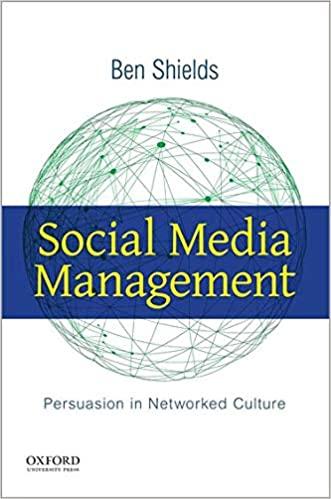Answered step by step
Verified Expert Solution
Question
1 Approved Answer
David completed his MBA degree at the Telfer School of Management a few years ago and he is proud to have been recently promoted to
David completed his MBA degree at the Telfer School of Management a few years ago and he is
proud to have been recently promoted to the position of vice president of customer services at the
first Bank of Ottawa. One of his responsibilities is to manage how the bank tellers provide services
to customers. Therefore, he is focusing on this area of the banks operations. According to the data
he received from the analytics department of the bank, customers needing teller service arrive
randomly at an average Poisson rate of per hour. Customers wait in a single line and are severed
by the next available teller when they reach the front of the line. The teller service for each
customer takes a variable amount of time, but on average can be completed in minutes. Assume
that service time follows an exponential distribution. The tellers earn an average wage of $ per
hour. Use Queuing calculator to answer the following questions.a If two tellers are used, what will be the average waiting time for a customer before getting service by a teller? marks
b If two tellers are used, on average how many customers will be in the bank, including those currently being served? marks
c The banks policy is to have no more than percent chance that a customer will need to wait more than minutes before being served by a teller. How many tellers need to be used to meet this standard? marks
d David feels that a significant cost is incurred by making a customer wait because of potential loss of future business. David estimates this cost to be $ for each minute the customer spends in the bank, counting both service time and waiting time. Given this cost, how many tellers should the bank employ? Hint: Calculate cost of waiting as Cw L where L is the expected number of clients in the system marks
e The bank has two types of customers: merchant customers and regular customers. The average arrival rate for each type of customer is per hour. Both types of customers currently wait in the same line and are served by the same tellers with the same service time distribution. David is considering changing this and the new process he is proposing will consist of two lines one for merchant customers and one for regular. Each line will have a single dedicated teller serving the line. Under this configuration, what would be the average waiting time for each type of customer before reaching a teller? marks
f Under the dedicated server configuration in part e on average, how many total customers would be in the bank, including those currently being served? How do these results compare to those from part b Is the results worse or better? marks
g David feels that if the tellers are specialized into merchant tellers and regular tellers, they would be more efficient and could serve customers in an average of minutes instead of minutes. Answer the questions from part e & f with this new average service time. How do the results compare to part a & bThe goal is to compare the scenario of dedicated servers with faster service rate with the scenario of combined servers with slower service rate. marks
Step by Step Solution
There are 3 Steps involved in it
Step: 1

Get Instant Access to Expert-Tailored Solutions
See step-by-step solutions with expert insights and AI powered tools for academic success
Step: 2

Step: 3

Ace Your Homework with AI
Get the answers you need in no time with our AI-driven, step-by-step assistance
Get Started


